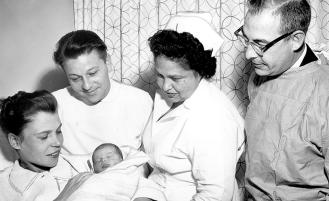Do You Need a Lung Cancer Screening?
After skin cancer, lung cancer is the second most common cancer in both men and women and is the leading cause of cancer death. According to the American Cancer Society, nearly one out of every four cancer deaths in the U.S. is from lung cancer.
If diagnosed at an early stage, lung cancer is easier to treat and survival rates are higher, but symptoms usually aren’t present in early stages. This is why screenings are so important.
“Unfortunately, many patients we see are already in the later stages of lung cancer when the chances of successful treatment are significantly reduced,” says Todd Freudenberger, MD, a pulmonologist with Overlake Clinics – Pulmonary Medicine. “With earlier detection, we know we can make a significant difference in the lives of our patients and tilt the odds back in their favor.”
So, how do you know if you should be screened? Guidelines for lung cancer screening are based on age and smoking history. And, in 2021, these guidelines were updated by the U.S. Preventive Services Task Force (USPSTF). Even if no symptoms are present, the USPSTF recommends annual screening for lung cancer with a low-dose CT scan in adults aged 50 to 80 years who have a 20 pack-year smoking history and currently smoke or have quit within the past 15 years.
What is a pack-year? A pack-year is calculated by multiplying the number of packs per day by the number of years smoked. So a pack a day (20 cigarettes) for 20 years is a 20 pack-year; a half pack a day for 10 years is 5 pack-years.
Screening can be discontinued once a person has not smoked for 15 years or develops a health problem that substantially limits life expectancy.
Low-dose CT scans are safe, quick and painless. They are also more capable of catching small abnormalities in the lungs than a chest X-ray. Be sure to speak with your healthcare provider about your smoking history and if lung cancer screening would be beneficial for you.
Should the screening reveal lung cancer, the Overlake Cancer Center provides the latest and most technologically advanced methods of treatment including surgery, chemotherapy, radiation therapy and targeted drug therapy.
Overlake's unique lung cancer program is distinguished by state-of-the-art diagnostic capabilities, leading-edge treatments, and a skilled, interdisciplinary staff, which includes a dedicated thoracic surgeon and oncology nurse navigator. The navigator is available to provide guidance to patients and their families throughout the treatment process.
Reduce Your Risk for Lung Cancer
Not all lung cancers can be prevented, but smoking is the greatest and most controllable risk factor. The American Lung Association estimates that around 90% of lung cancer cases can be attributed to smoking, so stopping smoking is the best way to reduce your risk.
Other risk factors include exposure to secondhand smoke, air pollution, toxic chemicals, and a family history of lung cancer.
It’s important to check for radon in your home and limit exposure to toxic chemicals (when cleaning your home or if you work with chemicals, make sure you are properly protected).
Eating a healthy diet and exercise are always a good idea in preventing disease, and there is some evidence it may offer protection against lung cancer.
Be sure to speak with your healthcare provider about your risk and if you need to schedule a screening.








